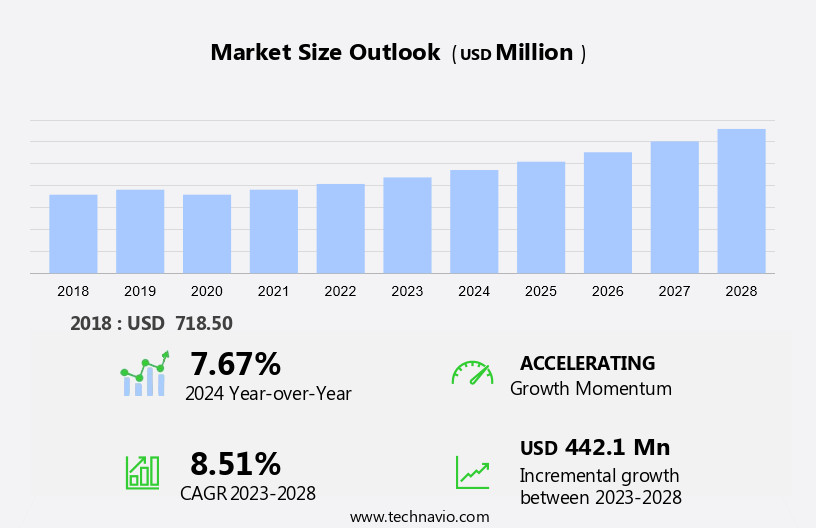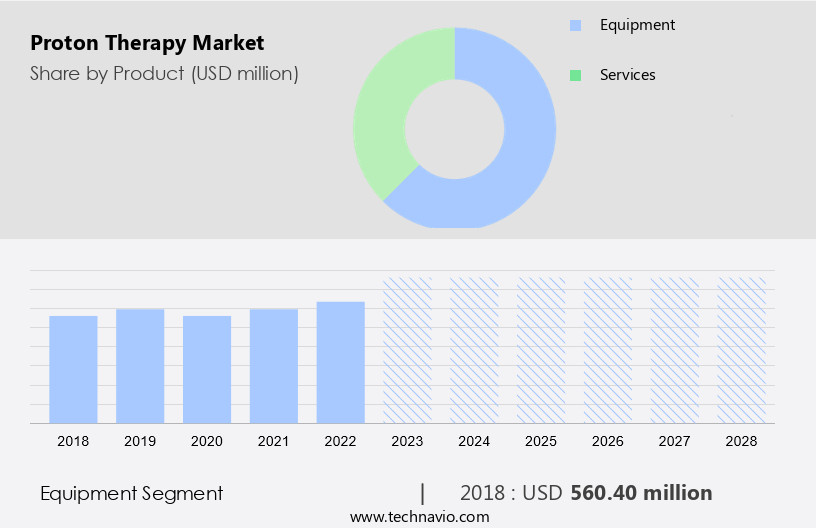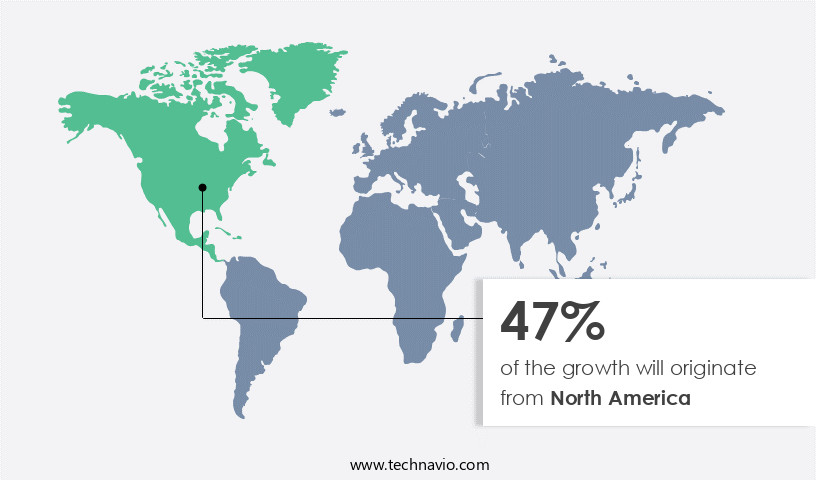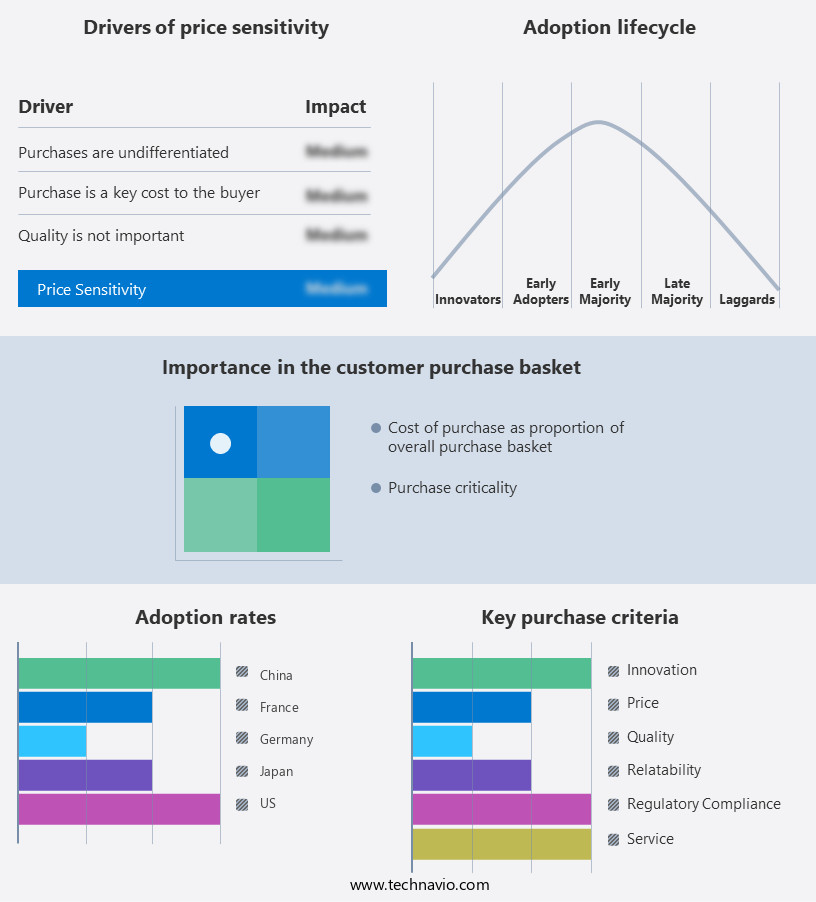Proton Therapy Market Size 2024-2028
The proton therapy market size is forecast to increase by USD 442.1 million at a CAGR of 8.51% between 2023 and 2028.
- Proton therapy, a sophisticated form of radiation therapy, is gaining traction In the healthcare industry due to its ability to precisely target cancer cells with minimal damage to healthy surrounding tissue. The market for this advanced treatment is driven by several factors, including the increasing prevalence of cancers and the technological advances in proton therapy. However, the high cost of proton beam therapy and lack of insurance coverage remain significant challenges. The rising burden of cancer and the need for more effective and less invasive treatment options are fueling market growth. Technological innovations, such as Intensity-Modulated Proton Therapy (IMPT) and Passive Scattering Proton Therapy (PSPT), are improving treatment accuracy and efficiency. Despite these advancements, the high cost and limited insurance coverage continue to hinder widespread adoption, particularly In the US and North America. To address these challenges, collaborations between industry players and healthcare providers, as well as government initiatives, are essential to make proton therapy more accessible and affordable for patients.
What will be the Size of the Market During the Forecast Period?

Request Free Sample
- Proton therapy, a type of particle therapy, emerges as a promising alternative to traditional radiation therapy In the cancer treatment landscape. This advanced form of radiation therapy utilizes proton particles instead of photons, enabling more precise targeting of tumors while minimizing exposure to healthy tissues. The market is driven by the increasing prevalence of cancer, growing awareness of the technology, and the potential for reduced side effects. Pediatric cancers, including those affecting the Central Nervous System (CNS), are particularly benefiting from proton therapy's ability to minimize long-term complications. However, the high cost of proton therapy devices and the complexity of set-up systems pose challenges to market growth.
- Clinical data continues to demonstrate the efficacy of proton therapy in treating various tumors, including those caused by cancer-causing viruses or faulty genes. As awareness campaigns gain traction, more physicians are exploring the benefits of proton therapy for their patients, making it an essential topic for ongoing research and development.
How is this Industry segmented and which is the largest segment?
The industry research report provides comprehensive data (region-wise segment analysis), with forecasts and estimates in "USD million" for the period 2024-2028, as well as historical data from 2018-2022 for the following segments.
- Product
- Geography
- North America
- Europe
- Asia
- Rest of World (ROW)
By Product Insights
- The equipment segment is estimated to witness significant growth during the forecast period. Proton therapy is an advanced form of radiation therapy that utilizes proton particles instead of high-energy X-ray beams for cancer treatment. This targeted therapy offers several advantages over traditional photon therapy, including reduced side effects and improved precision. Proton therapy minimizes radiation exposure to healthy tissues and organs, thereby reducing the risk of secondary malignant tumors and long-term complications. It also offers a more precise dose delivery, allowing for effective treatment near critical structures. Proton therapy is particularly beneficial for pediatric cancers and CNS cancer, as it reduces the risk of developmental delays and decreased bone and soft tissue growth.

Get a glance at the market report of share of various segments Request Free Sample
The equipment segment was valued at USD 560.40 million in 2018 and showed a gradual increase during the forecast period.
Regional Analysis
- North America is estimated to contribute 47% to the growth of the global market during the forecast period. Technavio's analysts have elaborately explained the regional trends and drivers that shape the market during the forecast period. Proton therapy, a type of particle therapy, is gaining popularity in cancer treatment due to its precision and ability to minimize side effects compared to traditional radiation therapy using photon beams. In North America, the market is thriving, with the US leading the way. The prevalence of cancer, favorable reimbursement policies, and increasing adoption of advanced proton therapy systems are key drivers. Guidelines recommending proton therapy and the presence of major companies contribute to market growth. Ion Beam Applications reported 60 proton therapy centers in development in North America in 2021. Proton therapy targets cancerous cells with high-energy proton particles, minimizing damage to healthy tissues and reducing long-term complications.

For more insights on the market size of various regions, Request Free Sample
Moreover, this advanced therapy is increasingly being used for prostate, breast, CNS, and pediatric cancers. Hospitals and proton therapy centers invest in accelerators, beam transport systems, beam delivery systems, nozzles, image viewers, patient positioning systems, and set-up systems to provide this precise treatment. Healthcare professionals are raising awareness about the benefits of proton therapy through campaigns. While photon therapy and other cancer therapeutics continue to be used, proton therapy's precision and reduced side effects make it an attractive alternative.
Market Dynamics
Our researchers analyzed the data with 2023 as the base year, along with the key drivers, trends, and challenges. A holistic analysis of drivers will help companies refine their marketing strategies to gain a competitive advantage.
What are the key market drivers leading to the rise In the adoption of Proton Therapy Industry?
- Increasing prevalence of cancers is the key driver of the market. Proton therapy is a specialized form of radiation therapy that utilizes proton particles instead of high-energy X-ray beams to destroy cancerous cells. This advanced form of particle therapy offers several advantages over traditional photon therapy, including the ability to deliver precise doses to the tumor while minimizing damage to healthy tissues. Proton therapy devices consist of an accelerator, beam transport system, beam delivery system, nozzle & image viewers, patient positioning system, and set-up systems. Physicians are increasingly turning to proton therapy for the treatment of various types of cancer, including prostate cancer, breast cancer, and CNS cancer therapeutics. Pediatric oncology also benefits from proton therapy as it minimizes long-term complications for pediatric cancer patients.
- The market for proton therapy is expected to grow significantly due to increasing cancer awareness, advancements in technology, and government support for healthcare facilities. The risk factors for cancer, such as cancer-causing viruses and faulty genes, are also on the rise. According to clinical data, approximately 16.5 million cancer cases were diagnosed worldwide in 2017, and this number is projected to increase to 21.3 million by 2025. The top five leading cancers diagnosed in 2020 were lung cancer, breast cancer, colorectal cancer, prostate cancer, and stomach cancer, accounting for approximately 49% of the overall diagnosed cases. Healthcare professionals are advocating for increased awareness campaigns to educate the public about the benefits of proton therapy and its potential to improve patient outcomes.
What are the market trends shaping the Proton Therapy Industry?
- Technological advances is the upcoming market trend. Proton therapy, a type of radiation therapy, is gaining popularity In the cancer treatment industry due to its precision and reduced side effects compared to traditional photon therapy. Physicians are increasingly turning to proton therapy for treating various types of cancers, including prostate and breast cancer, as it utilizes proton particles instead of high-energy X-ray radiation. Proton therapy devices, which include an accelerator, beam transport system, beam delivery system, nozzle & image viewers, and patient positioning system, enable the delivery of precise doses to the tumor while minimizing exposure to healthy tissues. The market for proton therapy is driven by the increasing awareness of the benefits of particle therapy and the advancements in technology.
- Pencil beam scanning (PBS) and intensity-modulated proton therapy (IMPT) are the latest innovations in proton therapy, offering even greater precision and reduced long-term complications. CNS cancer therapeutics, pediatric oncology, and the treatment of chronic disorders and cancerous cells are among the key applications of proton therapy. Healthcare professionals and hospitals are investing in proton therapy centers to expand their cancer treatment offerings and improve patient access. The government is also providing support to healthcare facilities to increase the availability of proton therapy. The improvement in imaging technology, such as CT, MRI, and PET, has made it possible to detect tumors more accurately, leading to better treatment outcomes.
What challenges does the Proton Therapy Industry face during its growth?
- High cost of proton beam therapy and lack of insurance coverage is a key challenge affecting the industry growth. Proton therapy, a type of particle therapy used in radiation oncology, offers precision and effectiveness in treating various types of cancers, including prostate, breast, and CNS cancer. However, the high capital costs of proton therapy centers, which can range from USD 600 to USD 800 per square foot for multi-room facilities costing up to USD 250 million to build, limit its widespread adoption. Compact single-room systems, while more affordable, still require substantial investments for the equipment, which can cost tens of millions of dollars. Physicians and healthcare professionals continue to prioritize the benefits of proton therapy, such as the ability to deliver precise doses to tumors while minimizing damage to healthy tissues, reducing long-term complications associated with X-ray radiation and cancer-causing viruses.
- Awareness campaigns and government support are essential to increasing patient access to this advanced cancer treatment. Proton therapy centers house complex systems, including an accelerator, beam transport system, beam delivery system, nozzle & image viewers, patient positioning system, and set-up systems. Intensity-modulated proton therapy and pencil beam scanning are advanced techniques used to further enhance the precision of proton therapy. Pediatric oncology patients, particularly those with pediatric cancers, can significantly benefit from proton therapy due to its reduced side effects compared to traditional photon therapy. Despite these advantages, the high cost remains a significant barrier to entry for many healthcare facilities.
Exclusive Customer Landscape
The market forecasting report includes the adoption lifecycle of the market, covering from the innovator's stage to the laggard's stage. It focuses on adoption rates in different regions based on penetration. Furthermore, the market report also includes key purchase criteria and drivers of price sensitivity to help companies evaluate and develop their market growth analysis strategies.

Customer Landscape
Key Companies & Market Insights
Companies are implementing various strategies, such as strategic alliances, market forecast, partnerships, mergers and acquisitions, geographical expansion, and product/service launches, to enhance their presence in the industry.
The industry research and growth report includes detailed analyses of the competitive landscape of the market and information about key companies, including:
- Advanced Oncotherapy plc
- Elekta AB
- Hitachi Ltd.
- Ion Beam Applications SA
- Mevion Medical Systems Inc.
- Optivus Proton Therapy Inc.
- ProTom International Holding Corp.
- Provision Healthcare
- Siemens AG
- Sumitomo Heavy Industries Ltd.
Qualitative and quantitative analysis of companies has been conducted to help clients understand the wider business environment as well as the strengths and weaknesses of key industry players. Data is qualitatively analyzed to categorize companies as pure play, category-focused, industry-focused, and diversified; it is quantitatively analyzed to categorize companies as dominant, leading, strong, tentative, and weak.
Research Analyst Overview
Proton therapy, a type of particle therapy, represents a significant advancement in cancer treatment. This innovative approach utilizes high-energy proton particles to destroy malignant cells with precision, minimizing damage to healthy tissues. The therapeutic potential of proton therapy lies in its ability to deliver precise doses of radiation to the tumor site, reducing the risk of long-term complications. The growing awareness of the benefits of proton therapy has led to an increase in demand from healthcare professionals and patients. Proton therapy offers a more targeted treatment option compared to traditional radiation therapies, such as photon therapy. This precision is particularly crucial in treating complex tumors, including those In the brain and pediatric cancers.
In addition, the market is driven by several factors, including the increasing prevalence of cancer and the growing demand for less invasive, more precise treatment options. Furthermore, advancements in technology, such as pencil beam scanning and intensity-modulated proton therapy, have expanded the capabilities of proton therapy centers. The role of physicians In the market is crucial, as they are responsible for diagnosing and referring patients for treatment. The collaboration between healthcare facilities and proton therapy centers plays a significant role in ensuring patient access to this advanced therapy. Proton therapy devices consist of various components, including an accelerator, beam transport system, beam delivery system, nozzle & image viewers, and patient positioning system.
Moreover, these components work together to deliver precise doses of proton particles to the tumor site. The clinical data supporting the efficacy of proton therapy is strong, demonstrating its potential in treating various types of cancer, such as CNS cancer, prostate cancer, and breast cancer. The use of proton therapy in pediatric oncology has gained significant attention due to its potential to minimize long-term complications. Despite the numerous benefits of proton therapy, challenges remain. The high cost of proton therapy devices and the limited availability of centers pose significant barriers to widespread adoption. Government support and continued investment in research and development are essential to addressing these challenges and expanding access to this advanced therapy.
|
Market Scope
|
|
Report Coverage
|
Details
|
|
Page number
|
143
|
|
Base year
|
2023
|
|
Historic period
|
2018-2022 |
|
Forecast period
|
2024-2028
|
|
Growth momentum & CAGR
|
Accelerate at a CAGR of 8.51%
|
|
Market growth 2024-2028
|
USD 442.1 million
|
|
Market structure
|
Concentrated
|
|
YoY growth 2023-2024(%)
|
7.67
|
|
Key countries
|
US, Germany, France, China, and Japan
|
|
Competitive landscape
|
Leading Companies, market growth and forecasting, Market Positioning of Companies, Competitive Strategies, and Industry Risks
|
Request Free Sample
What are the Key Data Covered in this Market Research and Growth Report?
- CAGR of the Proton Therapy industry during the forecast period
- Detailed information on factors that will drive the growth and forecasting between 2024 and 2028
- Precise estimation of the size of the market and its contribution of the industry in focus to the parent market
- Accurate predictions about upcoming growth and trends and changes in consumer behaviour
- Growth of the market across North America, Europe, Asia, and Rest of World (ROW)
- Thorough analysis of the market's competitive landscape and detailed information about companies
- Comprehensive analysis of factors that will challenge the market growth of industry companies
We can help! Our analysts can customize this market research report to meet your requirements.
Get in touch







![]() Get the report (PDF) sent to your email within minutes.
Get the report (PDF) sent to your email within minutes.
Complimentary full Excel data with your report purchase.